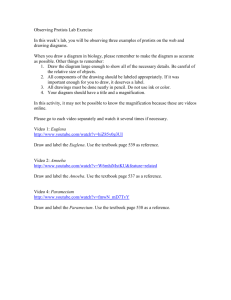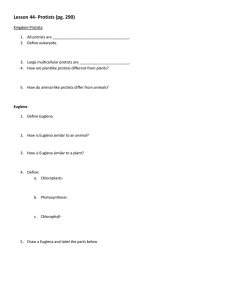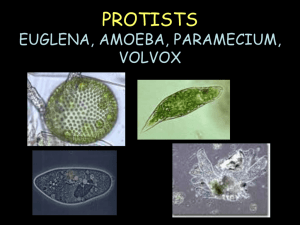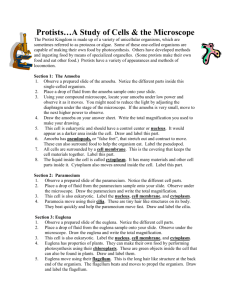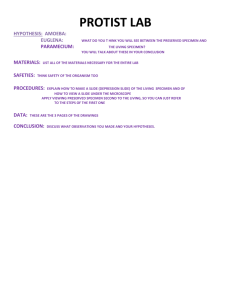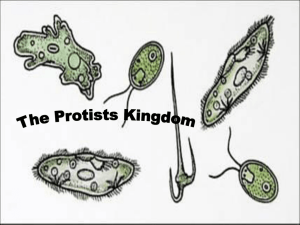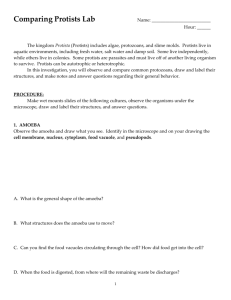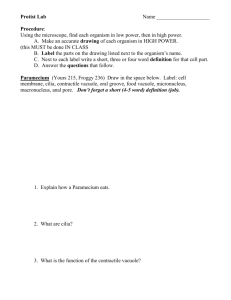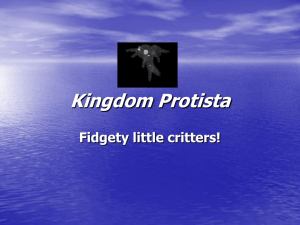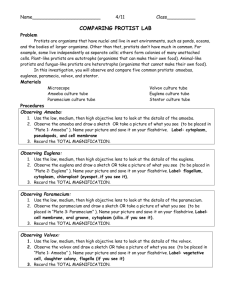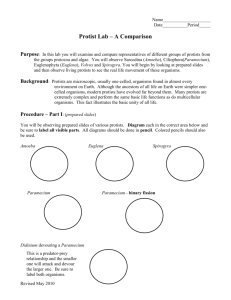Protist lab – prepared slides
advertisement
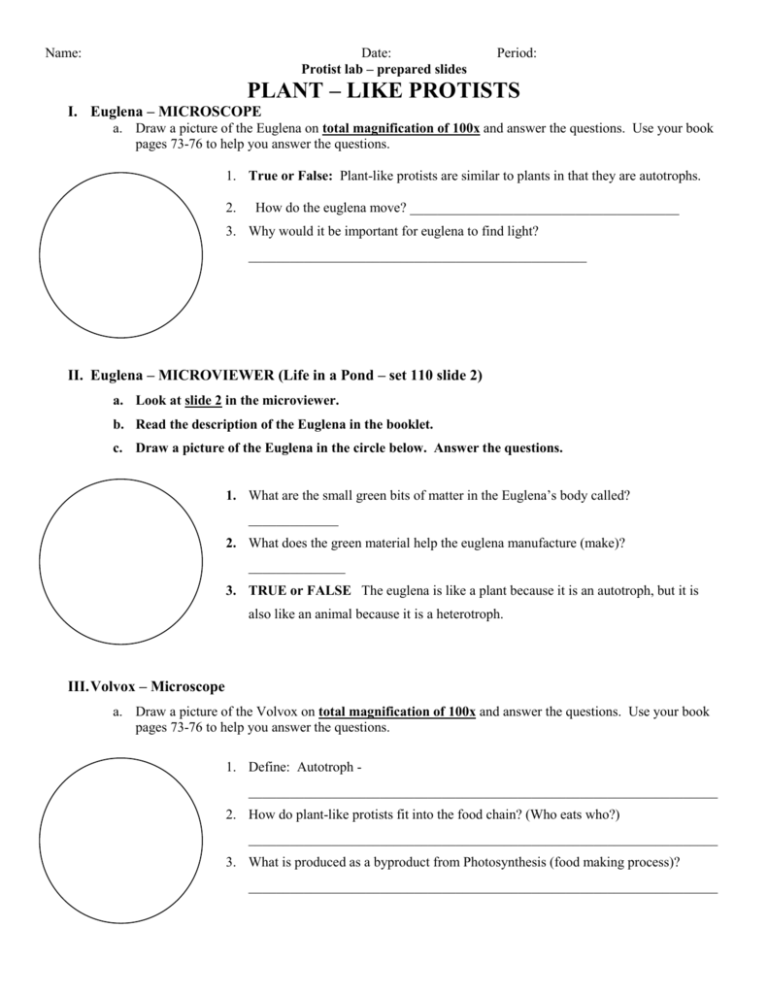
Name: Date: Protist lab – prepared slides Period: PLANT – LIKE PROTISTS I. Euglena – MICROSCOPE a. Draw a picture of the Euglena on total magnification of 100x and answer the questions. Use your book pages 73-76 to help you answer the questions. 1. True or False: Plant-like protists are similar to plants in that they are autotrophs. 2. How do the euglena move? _______________________________________ 3. Why would it be important for euglena to find light? _________________________________________________ II. Euglena – MICROVIEWER (Life in a Pond – set 110 slide 2) a. Look at slide 2 in the microviewer. b. Read the description of the Euglena in the booklet. c. Draw a picture of the Euglena in the circle below. Answer the questions. 1. What are the small green bits of matter in the Euglena’s body called? _____________ 2. What does the green material help the euglena manufacture (make)? ______________ 3. TRUE or FALSE The euglena is like a plant because it is an autotroph, but it is also like an animal because it is a heterotroph. III. Volvox – Microscope a. Draw a picture of the Volvox on total magnification of 100x and answer the questions. Use your book pages 73-76 to help you answer the questions. 1. Define: Autotroph ____________________________________________________________________ 2. How do plant-like protists fit into the food chain? (Who eats who?) ____________________________________________________________________ 3. What is produced as a byproduct from Photosynthesis (food making process)? ____________________________________________________________________ IV. Volvox – Microviewer (Pond Life set #12, slide 5) a. Look at slide 5 in the Pond Life microviewer slide set. b. Read the description of the Volvox in the booklet (slide 5) c. Draw a picture of the volvox below and answer the questions. 1. TRUE or FALSE The volvox is a hollow ball made up of hundreds of cells. 2.TRUE or FALSE When the original volvox fills up with daughter cells it will burst open releasing the new volvox cells. ANIMAL – LIKE PROTISTS V. Amoeba - Microscope Draw a picture of Amoeba on total magnification 100x and answer the questions. Use your book pages 63-65 to help you answer the questions. 1. How do amoebas move? What does this term mean in Greek? __________________________________ 2. What does this foot-like extension do for the amoeba? ___________________________________________ 3. How do water, oxygen, and carbon dioxide get into the amoeba? ____________________________________________ VI. Amoeba – Microviewer (Pond Life set #12, slide 3) a. Look at slide 3 in the microviewer b. Read the description of the Amoeba in the booklet (slide 3) c. Draw a picture of the Amoeba and answer the questions 1. How does the amoeba eat? ________________________________________________________________________ ________________________________________________________________________ VII. Paramecium - Microscope Draw a picture of the paramecium on total magnification of 100x and answer the questions. Use your book pages 66 67 to help you answer the questions. 1. True or False: Protists have a nucleus. 2. What do the paramecium use to eat and move? _______________________ VIII. Paramecium – Microviewer (How a one-celled animal divides, set #104, slides 1, 2, 3) a. Look at slides 1, 2, 3 in the microviewer b. Read the description of the Paramecium in slides 1, 2, 3 c. Answer the questions below 1. Look at slide 1 in the microviewer. Do all of the paramecium have exactly the same shape? __________ Do they all seem to be about the same shape? _________ 2. Look at slide 2 in the microviewer. What are the storage containers called that hold food and water for the paramecium? (you may need your notes for this organelle name) _________________________ 3. Look at slide 3 in the microviewer. How does this organism move? _____________________ 4. Read section 4 in the booklet. How does this animal reproduce? ____________________________________________________________________________________ If you have not completed the plant-like protists please move to the next lab station to complete this section. Lab finished? CONGRATULATIONS! You are now ready to look at live protists under the microscope.
